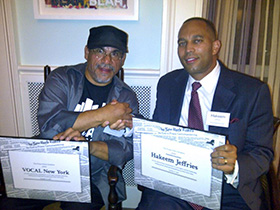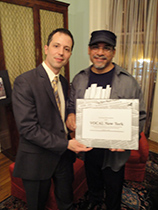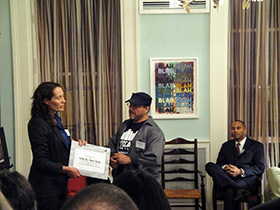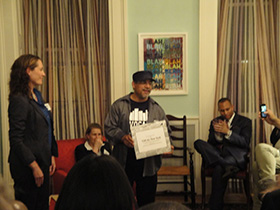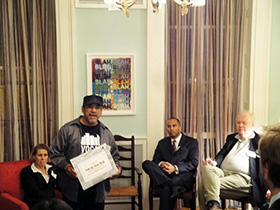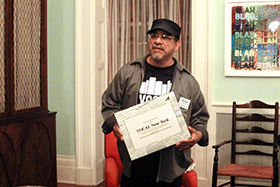LD 1697 allows town to exclude incarcerated populations for the purposes of determining population-based services.
by Leah Sakala,
March 30, 2012
The town of Warren, Maine, won’t have to pay for the Census Bureau’s prison miscount after all, thanks to a new bill that was recently signed by the Governor.
Last month, I explained that the relocation of the Maine State Prison to the Town of Warren had the potential to cause serious problems for the town. Since the Census Bureau counted all the people incarcerated in the prison as if they were residents of the prison, the prison relocation pushed Warren’s total reported population over 4,000. And in Maine, any municipality with more than 4,000 people is required to enforce the Maine Uniform Building and Energy Code and cover additional county dispatch fees.
Fortunately, State Representative Wesley Richardson recognized the harm of forcing the town of Warren to foot additional expenses on account of incarcerated people who are not permitted to use local services. To solve the problem, he proposed LD 1697 to exclude the incarcerated population for the purposes of determining the “resident” population of Warren.
As the preamble of the legislation explains, the new bill provides Warren legislative relief “to avoid undue burdens and confusion” caused by the Census Bureau’s practice of counting incarcerated people as if they were residents of the place where the prison is located.
A leader of the fight to end prison-based gerrymandering in New York State passes away.
by Peter Wagner,
March 29, 2012
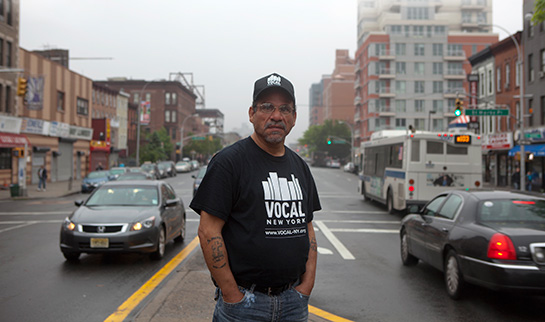
Ramon Velasquez, outside of VOCAL-NY’s office in Brooklyn, NYC.
(Photo: David Y. Lee/Public Welfare Foundation)
I received some very sad news from Sean Barry at VOCAL-NY this morning about the passing of Ramon Velasquez, the face of New York’s successful campaign to end prison-based gerrymandering:
Ramon Velasquez crossed over on March 27th at a nursing home in Staten Island. He was a longterm survivor of HIV/AIDS and hepatitis C and a fierce community activist. A service will be held TODAY (March 29th) from 6pm – 8pm at Brooklyn Funeral home at 2380 Pacific Street. Ramon is survived by his brother, daughter, two grandchildren and many other family members.
Ramon was a fearless warrior for social justice who inspired and connected with people wherever he went. It seemed like he was everywhere at once and he was always loud. He was usually there first too, sometimes hours early for a 6am bus departure to Albany or a membership meeting.
In and out of prison and jail since he was 14, Ramon became a leader in VOCAL-NY shortly after being released from prison for the last time in 2007. After serving a 17 year sentence, he ended up in Bellevue Men’s Shelter determined to turn his life around. Shortly afterwards, he moved into a transitional housing program for people living with HIV/AIDS run by Praxis Housing Initiatives and eventually led their resident advisory board before moving into a permanent housing program in Brooklyn.
While incarcerated, Ramon led inmate liaison committees that negotiated with prison officials and organized successful inmate-led protests to win better conditions. This shaped his beliefs about social change and the need for people who were directly affected to advocate on their own behalf. After becoming a member of VOCAL-NY, he was involved in campaigns to restore voting rights for people on parole, create affordable housing for homeless people living with HIV/AIDS and pass a “911 Good Samaritan” law to prevent overdose deaths.
After being discharged from life parole in 2010, in part due to his community activism, Ramon was able to travel more widely to Albany and Washington, DC to lobby elected officials and engage in direct action. In August 2011, Ramon was arrested for disrupting the House of Representatives during congressional debate on the debt ceiling while protesting proposed cuts to Medicare and Medicaid. The last protest he participated in was the “Occupy Our Homes” action in early December that moved a homeless family into a vacant house in East New York that had been foreclosed on by Bank of America.
Ramon was the face of the campaign to end prison-based gerrymandering in New York and was recognized for his leadership (alongside Assembly Member Hakeem Jeffries) by the Prison Policy Initiative during an October 2011 ceremony. He had been counted as as a resident of Wyoming County while incarcerated at Attica during the last round of redistricting, instead of his home community in Brooklyn, and he turned his frustration into proactive leadership to change the way inmates were counted. The Public Welfare Foundation also profiled his activism around criminal justice issues. (More of Ramon’s story and some photos in the profile are available online).
He will be deeply missed by his VOCAL-NY family.
VOCAL-NY has put together a page with photos, video and articles featuring Ramon at:
http://www.vocal-ny.org/blog/drug-policy/rip-ramon-velasquez/. I feel compelled to add some additional detail about Ramon’s work abolishing prison-based gerrymandering.
Ramon was extremely skilled at explaining why prison-based gerrymandering matters. His clarity and passion comes through clearest in this quote celebrating the passage of the law in New York that ended prison-based gerrymandering:
“When I was being counted upstate when I was in prison, the community that I came from was being punished as well by having their vote diluted. It doesn’t make political sense to be counted in a place where you can’t vote and don’t use services. This bill isn’t about money or jobs, it’s about political power.”
When the biggest beneficiaries of prison-based gerrymandering sued to overturn the civil rights law that counts incarcerated people at home for redistricting purposes, Ramon was quick to write an excellent first-person account how prison-based gerrymandering hurts his community for the Huffington Post.
And when a group of voters and organizations sought to intervene in the lawsuit to help the state defend the landmark civil rights law, Ramon expertly explained that prison-based gerrymandering hurts everyone who does not live next to the state’s largest prisons, and why VOCAL-NY was stepping up to the plate:
“Many of our members live in communities that are heavily impacted by the criminal justice system and have a disproportionate number of residents sent to state prison. Every district that has fewer prisons than Senator Little’s district loses representation from prison-based gerrymandering, but the districts that see many of their members counted in prison lose even more.”
It is deeply sad to lose a supporter, a colleague, a leader, a client or a friend. Ramon was all five, and much more. I can take some solace in the fact that Ramon was able to get some of the recognition he deserved at our October event and in the Public Welfare Foundation 2010 profile. And I’m very glad that Ramon lived to see the final validation of his work to end prison-based gerrymandering in New York when, just two weeks ago, the Senators who would have benefitted the most from bringing back prison-based gerrymandering abandoned their legal appeals.
Thank you Ramon. New York — and every state that follows its lead — owes you a huge debt for showing the way forward. You will be missed.
Our guide explaining what to look for in redistricting data in order to avoid prison-based gerrymandering is now available in Spanish.
by Leah Sakala,
March 29, 2012
We are proud to report that one of our publications, “Preventing Prison-based Gerrymandering in Redistricting: What to Watch For” is now available in Spanish. This guide will tell you what to look for in redistricting data and in proposed plans in order to minimize the harm of prison-based gerrymandering.
Estamos orgullosos de anunciar que una de nuestras publicaciones, “Prevenir la manipulación de los límites de los distritos electorales sobre la base de la población reclusa: qué es lo que hay que evitar,” ahora está disponible en Español. Está guía le explicará qué es lo que hay que buscar en los datos de la redistribución de distritos para minimizar el daño de la manipulación de los límites de los distritos electorales sobre la base de la población reclusa.
On Friday, Virginia Governor Bob McDonnell signed HB13, giving more rural counties the option of avoiding prison-based gerrymandering.
March 27, 2012
For Immediate Release: March 27, 2012
Please Contact:
| Dēmos |
Anna Pycior |
(212) 389-1408 |
apycior@demos.org |
| Prison Policy Initiative |
Peter Wagner |
(413) 527-0845 |
|
On Friday, Virginia Governor Bob McDonnell signed a new law that will give more rural counties the option of avoiding prison-based gerrymandering, helping to ensure fairer representation in local government. The law, HB13, passed both Houses unanimously. It was sponsored by Delegate Riley Ingram (R-Chesterfield, Henrico, Prince George, City of Hopewell).
“HB 13 is a step forward for fairness in redistricting,” said Peter Wagner, Executive Director of the Prison Policy Initiative. “Counties will no longer be required to pad certain districts with incarcerated persons who are not true residents of the prison district. Prison-based gerrymandering distorts our democracy, and HB13 will help end that practice.” Wagner submitted testimony in support of HB13, and worked with the Richmond Times-Dispatch, Roanoke Times, Powhatan Today, the News and Advocate, and the Free Lance-Star to raise awareness about prison-based gerrymandering.
“The trend is clear: states are rejecting prison-based gerrymandering. Virginia should be congratulated for taking this common-sense step to recognize that a prison is not a home and should not be treated as such in redistricting.” said Brenda Wright, Director of the Democracy Program at Dēmos, which partners with the Prison Policy Initiative on a national campaign to end prison-based gerrymandering.
About the Virginia law
Historically, Virginia law required counties to base their legislative districts on federal Census data, denying Virginia counties the flexibility exercised by counties in other states to choose the population basis of their required redistricting. The Census Bureau counts incarcerated people – who by state law can’t vote and are not considered residents of the prison – as residents of the prison location. When Census data is used for rural county redistricting, this practice gives extra influence to the people who live next to a large prison, and dilutes the votes of residents in other districts in the same county.
In 2001, Virginia amended the law, giving counties where incarcerated people make up more than 12% of the Census population the option to avoid padding the Board of Supervisors district that contains the prison with the prison population.
Unfortunately, the 2001 law did not give all counties relief from state-mandated prison-based gerrymandering. For example, Southampton County’s prison population was too small to benefit from the 2001 law, yet the county was still forced to draw a district that was more than half incarcerated. This gave the residents of the district with the prison more than twice the political influence of the residents of other districts in the county.
The expansion of the law signed by the Governor on Friday extends the option to avoid prison-based gerrymandering to any county faced with drawing a county legislative district that is more than 12% incarcerated. Ideally, the bill would have passed last year, while redistricting was still underway. Identical language unanimously passed the House of Delegates last year, but died in Senate committee.
National context
In most states, local governments are free to avoid prison-based gerrymandering. Virginia was one of a handful of exceptions, where local redistricting is regulated in a way that is blind to the problem of prison-based gerrymandering.
Virginia’s new law brings the state in line with a national trend towards protecting local governments from the vote dilutive harm of prison-based gerrymandering. Michigan, Colorado, and New Jersey statutes explicitly either allow or require local governments to avoid prison-based gerrymandering. In Mississippi, California, and Illinois, court cases and state attorney general opinions have supported local governments in adjusting the census to avoid prison-based gerrymandering. The first two states that ended prison-based gerrymandering for state legislative districts, Maryland and New York, also passed legislation that ends prison-based gerrymandering in local governments as well.
###
Thanks to the 2010 law that ended prison-based gerrymandering in NY, Livingston County's democracy will no longer be distorted by prison populations.
by Leah Sakala,
March 26, 2012
One of the most dramatic cases of prison-based gerrymandering is about to be fixed.
Here’s what was wrong:
When Livingston County, New York drew new county legislative districts after the 2000 Census, all of the people incarcerated in the town of Groveland were used to make up a whopping 64% of the town’s political clout in county government. This was bad news for everyone who didn’t live in Groveland because it meant that every 4 people who live in the town with the prison had as much say in county government as 10 people who live elsewhere in Livingston County.
The Chair of the Livingston County legislature, who represents the town padded with the prison populations, told the New York Times that he doesn’t really represent the incarcerated people to whom he owes the bulk of his say in county affairs, explaining, “We don’t campaign; they don’t vote.”
Fast forward to today:
Thanks to the 2010 law that ended prison-based gerrymandering in New York, all Livingston County residents will enjoy equal access to the county legislature. This is because, as the Erie County Attorney General has affirmed, the law ending prison-based gerrymandering applies to both New York state legislative districts and and local government districts.
A recent Livingston County News article reports that now that the plaintiffs who sued to bring back prison-based gerrymandering have given up the case, the county will proceed with re-weighting the county voting system to reflect the people who actually call Livingston County home.
President and Director-Counsel of NAACP LDF passes; Under his leadership, LDF took up prison-based gerrymandering reform.
by Peter Wagner,
March 23, 2012
John Payton, the President and Director-Counsel of the NAACP Legal Defense and Educational Fund, Inc., passed away last night. The LDF writes:
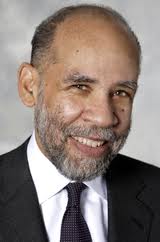
John Payton, 1946-2012
John Payton, the President and Director-Counsel of the NAACP Legal Defense and Educational Fund, Inc., and a tireless advocate for justice, equality, and opportunity, died late Thursday after a brief illness. He was 65. LDF is deeply saddened and mourns this tragic loss.
John was the 6th leader of LDF, the nation’s first and preeminent civil rights law firm. During his tenure he guided the organization to resounding legal victories, including Lewis v. City of Chicago, which vindicated the rights of over 6,000 applicants who sought to become firefighters in the City of Chicago, and Northwest Austin Municipal Utility District v. Holder, which turned back a challenge to the constitutionality of a core provision of the Voting Rights Act of 1965. To the LDF staff and to a great many others, John was fearless – a guiding light, a brilliant advocate, a mentor and teacher who believed that American democracy thrives when it embraces all of our voices.
John Payton was a civil rights giant. His contributions to the movement are being chronicled better by others, and I’d like to focus on his work ending prison-based gerrymandering.
Under his leadership, the LDF took up the fight against prison-based gerrymandering. They published the indispensable Captive Constituents: Prison-Based Gerrymandering and the Distortion of Our Democracy, helped pass legislation in New York that ended prison-based gerrymandering, and joined in the successful defense of New York’s and Maryland’s laws ending prison-based gerrymandering.
John took a personal interest in the problem of prison-based gerrymandering, working with other African-American leaders to raise the issue with the Commerce Department in December 2009. As John explained:
Because incarcerated persons in the United States are disproportionately African Americans and other people of color, the current counting of prisoners at their place of incarceration, rather than at their pre-arrest residence, severely weakens the voting strength of entire communities of color.
He will be missed.
New Yorkers enjoyed a clear victory today, as plaintiffs in the Little v. LATFOR case dropped their challenge of the 2010 state law ending prison-based gerrymandering.
March 16, 2012
For Immediate Release: March 16, 2012
Please Contact:
| Brennan Center for Justice |
Madeline Friedman |
(646) 292-8357 |
madeline.friedman@nyu.edu |
| Center for Law & Social Justice |
April Silver |
(718) 756-8501 |
pr@akilaworksongs.com |
| Dēmos |
Anna Pycior |
(212) 389-1408 |
apycior@demos.org |
| LatinoJustice |
John Garcia |
(212) 739-7581 |
jgarcia@latinojustice.org |
| NAACP Legal Defense Fund |
Mel Gagarin |
(212) 965-2783 |
mgagarin@naacpldf.org |
| NYCLU |
Michael Cummings |
(212) 607-3300 x368 |
mcummings@nyclu.org |
| Prison Policy Initiative |
Peter Wagner |
(413) 527-0845 |
|
New York, NY – New Yorkers enjoyed a clear victory today, as plaintiffs in the Little v. LATFOR case dropped their challenge of the state law ending prison-based gerrymandering.
The law, known as Part XX, was passed in 2010 to increase fairness in redistricting by counting incarcerated people as residents of their home districts. The previous practice, often called prison-based gerrymandering, gave extra political influence to districts containing prisons, diluting the votes of every resident of a district with no (or fewer) prisons. The law corrects this bias and assures that all communities in New York have equal representation in our government.
A group of plaintiffs led by State Senator Elizabeth Little filed suit seeking to strike down the new legislation. She claimed that legislative districts — including her own, which contains 12,000 incarcerated persons — should be required to include prisoners when redistricting. After the lawsuit was filed, a Quinnipiac University poll showed that a majority of New Yorkers of all regions and parties supported the new law.
In December, New York Supreme Court Justice Eugene Devine ruled that the law was constitutional. The plaintiffs then sought to go directly to the Court of Appeals, bypassing the Supreme Court’s Appellate Division. The Court of Appeals declined to hear plaintiffs’ direct appeal on February 14. Plaintiffs then filed documents with the Appellate Division withdrawing the appeal.
The Brennan Center for Justice, the Center for Law & Social Justice, Dēmos, LatinoJustice PRLDEF, the NAACP Legal Defense and Education Fund, the New York Civil Liberties Union, and the Prison Policy Initiative represented 15 voters from around New York State who intervened in the lawsuit to defend the law. Attorneys for the organizations issued the following joint statement:
“Prison-based gerrymandering in New York unjustly diluted the voice of voters and gave undue political influence to districts with large prisons. By dropping this challenge, opponents acknowledged they were fighting a losing battle. As the redistricting process continues, we are pleased that incarcerated persons will be allocated where they belong — the communities from which they came and to which they overwhelmingly return. This victory helps ensure that all New Yorkers have an equal voice in our democracy.”
About Part XX and Prison-Based Gerrymandering
Part XX was a major civil rights victory that brought New York’s redistricting practices in line with the New York Constitution’s declaration that a prison is not a residence.
Enhancing the weight of a vote cast in a district with a prison dilutes the weight of a vote cast in all other districts without prisons. According to research by the Prison Policy Initiative conducted after the 2000 Census, prison-based gerrymandering has a particularly negative impact on the voting strength of African-American and Latino communities, because 81 percent of the state’s prison population is African-American or Latino, but 98 percent of the state’s prison cells are in disproportionately white Senate districts.
The most dramatic examples of prison-based gerrymandering are in upstate counties and cities. For example, half of a council ward in the city of Rome, New York is incarcerated. As a result, the actual residents of that ward wield twice the influence of other city residents. Recognizing the distortions caused by prison-based gerrymandering at the local level, 13 New York counties with large prisons — including four in plaintiff Senator Little’s district — have historically exercised their discretion to remove the prison populations prior to redistricting.
The law brings consistency to redistricting in New York, prohibiting both the state and local governments from giving extra political influence to districts that contain prisons.
The legal documents can be found at the Prison Policy Initiative web page for Little v. LATFOR.
A new article by John C. Drake, published in the Washington University Journal of Law & Policy explains the similarities between prison-based gerrymandering and the infamous 3/5 clause.
March 14, 2012

FOR IMMEDIATE RELEASE:
March 14, 2012
CONTACT:
John C. Drake, jcharlesdrake@gmail.com, (508) 340-0881
When states include prison populations in their legislative district maps, prison-host communities gain political power in the same way Southern states used slaves to gain extra representation in Congress, says a new article by John C. Drake, published in the Washington University Journal of Law & Policy. The article, “Locked Up and Counted Out: Bringing an End to Prison-based Gerrymandering” addresses a long-standing flaw in the U.S. Census that has been receiving considerable attention only in the last decade.
The U.S. Census counts people in prison as residents of the prison location, even though they remain residents of their pre-incarceration homes. Prisoners, who in 48 states may not vote, are disproportionately people of color; but prisons are typically located in disproportionately white, rural areas. When states use this data to draw districts, the result gives extra political influence to the districts that contain prisons, diluting the votes of everyone else. The New York Times editorial page coined the phrase “prison-based gerrymandering” to describe the practice.
“Comparing prison-based gerrymandering to the infamous three-fifths clause is a common rhetorical device,” says Peter Wagner, Executive Director of the Prison Policy Initiative and the nation’s leading expert on prison-based gerrymandering. “But John Drake goes further, and puts prison-based gerrymandering in the historical context.”
Prior to the elimination of slavery following the Civil War, the U.S. Constitution counted slaves as three-fifths of a person. “This is commonly misunderstood as an insult to Black Americans. But the real injustice was counting the slaves at all and swelling the political clout of the slave-owning South,” said Drake, a former journalist and a third–year law student at Washington University School of Law in St. Louis, Missouri. “Prison-based gerrymandering uses mass incarceration as a device for creating a new injustice: the dilution of voting strength in the urban communities that most prisoners call home.”
“Four states have so far had the wisdom to pass legislation to fix the Census Bureau’s prison miscount and end prison-based gerrymandering,” says Peter Wagner. “John Drake’s article is a powerful argument for why more states should follow their lead.”
“It was only through long, if ill-advised, negotiation that the framers of the U.S. Constitution included the three-fifths clause, which gave extra representation to the slave states,” said author John Drake. “Prison-based gerrymandering, by contrast, is an accidental by-product of modern rates of high incarceration. The result is no less pernicious – political power gained at the expense of a captive, disenfranchised population. States must now choose between intentionally diluting the votes of their own citizens who lack the good fortune of living near a prison, and using the legislative process to negotiate a solution.“
Drake’s article also notes:
- The Census rules on which prison-based gerrymandering relies are internally inconsistent: for example, students in boarding school are counted as residents of the parental home, whereas children in juvenile detention centers are counted as residents of the detention centers.
- Prison-based gerrymandering creates and strengthens rural state legislative districts, whose lawmakers’ interests often are at odds with the disproportionately black and urban prisoners on whose backs they’ve gained political power. The prisoners do not consider themselves constituents of those lawmakers, and the lawmakers typically do not treat them as such.
- Rural county legislatures have adopted a patchwork of policies to avoid dramatic cases of vote dilution like that in Florida’s Calhoun County where almost half of one district is incarcerated, giving the residents of that county district twice the political influence of other Calhoun County residents.
- Prison-based gerrymandering results in the dilution of minority voting strength, which invokes the protections of the Voting Rights Act.
The Washington University Journal of Law & Policy is committed to generating a symposium-based publication that brings together communities of scholars, through a mutual and collaborative student and faculty process, emphasizing existing and emerging visions of the law in relation to interdisciplinary and multicultural perspectives, the implications of technology, and the consequences of economic globalization for the purpose of influencing law and social policy.
The article is available on Lexis and Westlaw at 37 WASH. U. J.L. & POL’Y 237 (2012) and on the internet at http://openscholarship.wustl.edu/law_journal_law_policy/vol37/iss1/11
-30-
PPI made its public debut ten years ago, and the movement to end prison-based gerrymandering has come a long way since!
by Peter Wagner,
March 14, 2012
The Prison Policy Initiative had its first public debut ten years ago today, when I showed up at a redistricting hearing in the Bronx and told the committee to scrap their proposed maps and start over with a new dataset that counted incarcerated people at their true, home addresses. Prison populations shouldn’t be used to dilute the votes of people who do not live next to prisons. The public was intrigued by my testimony, but at that point the legislature didn’t take my advice.
Fast forward a decade: four states have ended prison-based gerrymandering. New York and Maryland have passed laws to count people in prison at home for this round of redistricting, and both states’ laws were successfully defended in court. Delaware and California passed legislation that will take effect after the next Census in 2020. The Census Bureau continued to count incarcerated people in the wrong place, but in 2010 they made an important change. They published the prison count data earlier than ever before, so that redistricting bodies would have the technical ability to avoid or minimize prison-based gerrymandering if they wished.
In that intervening decade, we worked to put numbers on the problem, develop solutions, and recruit civil rights, criminal justice and good government groups into a large movement for reform at the local, state and federal levels. Together, we’ve permanently changed how our democracy works in 4 states and hundreds of counties; and we’ve set our sights on a permanent national solutions.
Thank you for joining with us!
by Leah Sakala,
March 12, 2012
A proposed constitutional amendment in New York State would bring back prison-based gerrymandering, says redistricting expert Todd Brietbart and Common Cause of New York. City and State has the story: Democratic Expert: Redistricting Amendment Brings Back Prison-Based Gerrymandering [UPDATED]
Anna Pycior of Dēmos also weighed in: New York Redistricting Should Be Non-Partisan, Not Bi-Partisan
Anna’s piece ends:
This amendment is a scapegoat that offers little to no real reform. Being that it was only released last night, it’s too early to say what the likelihood is that it will be the “reform” promised by many legislators.

